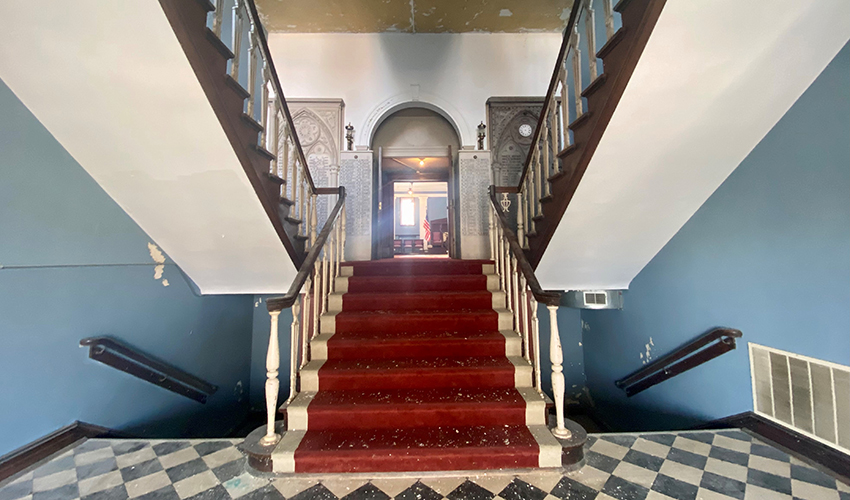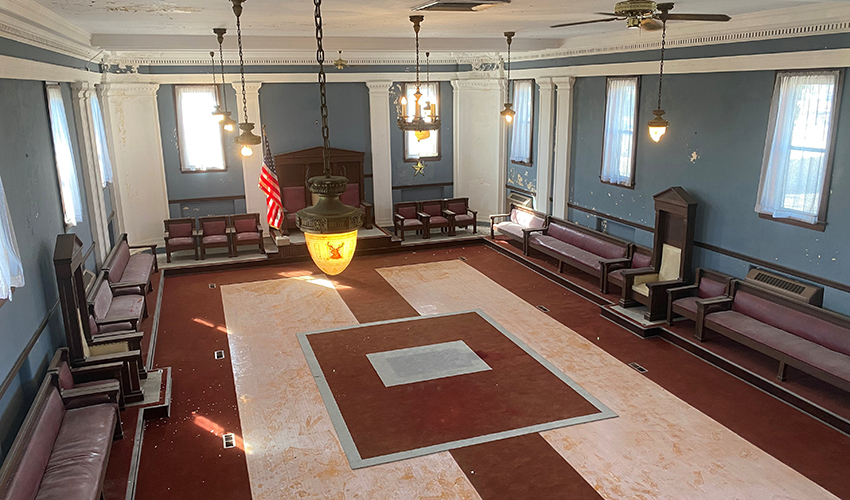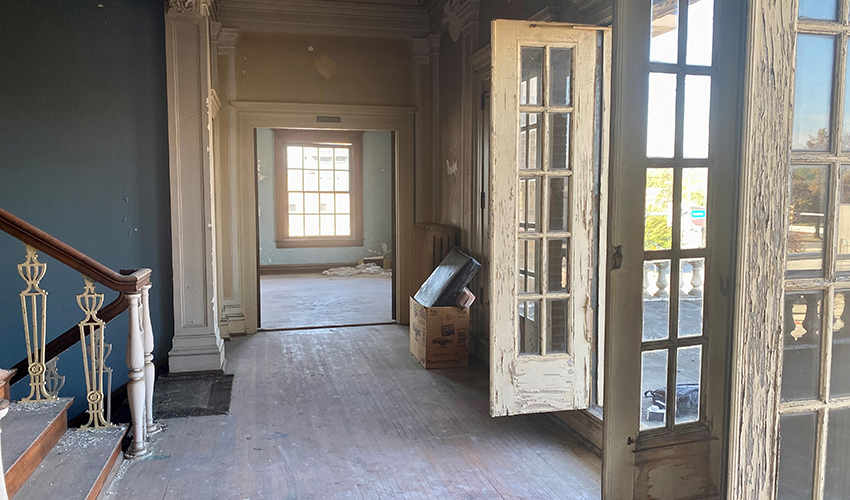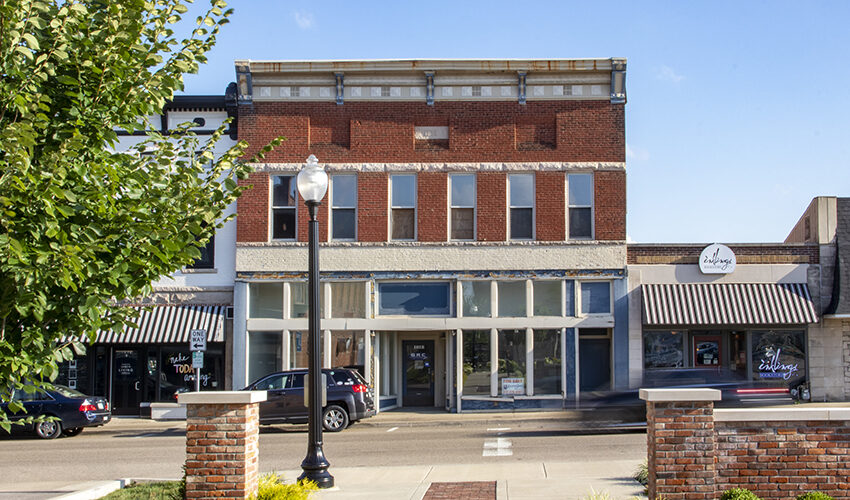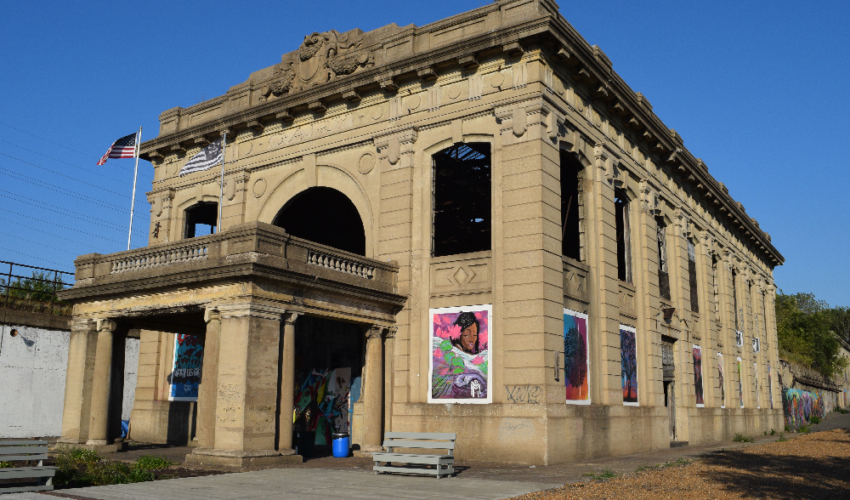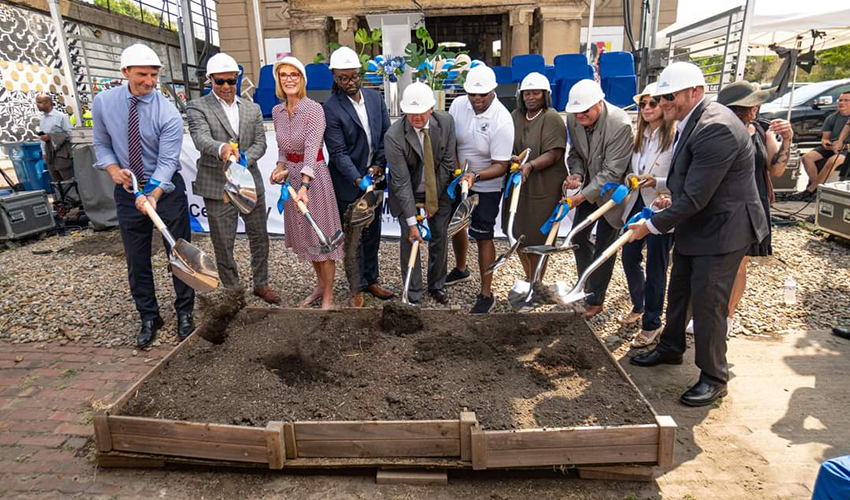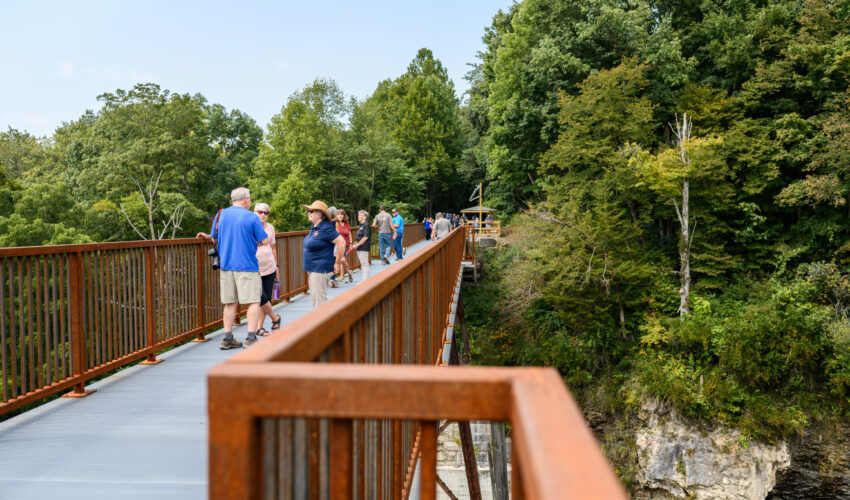NEWS
Promising Progress for 10 Most Endangered Sites
In 2023, encouraging progress signaled a safer future for formerly threatened sites in Bedford, Columbus, Gary, and Delphi.
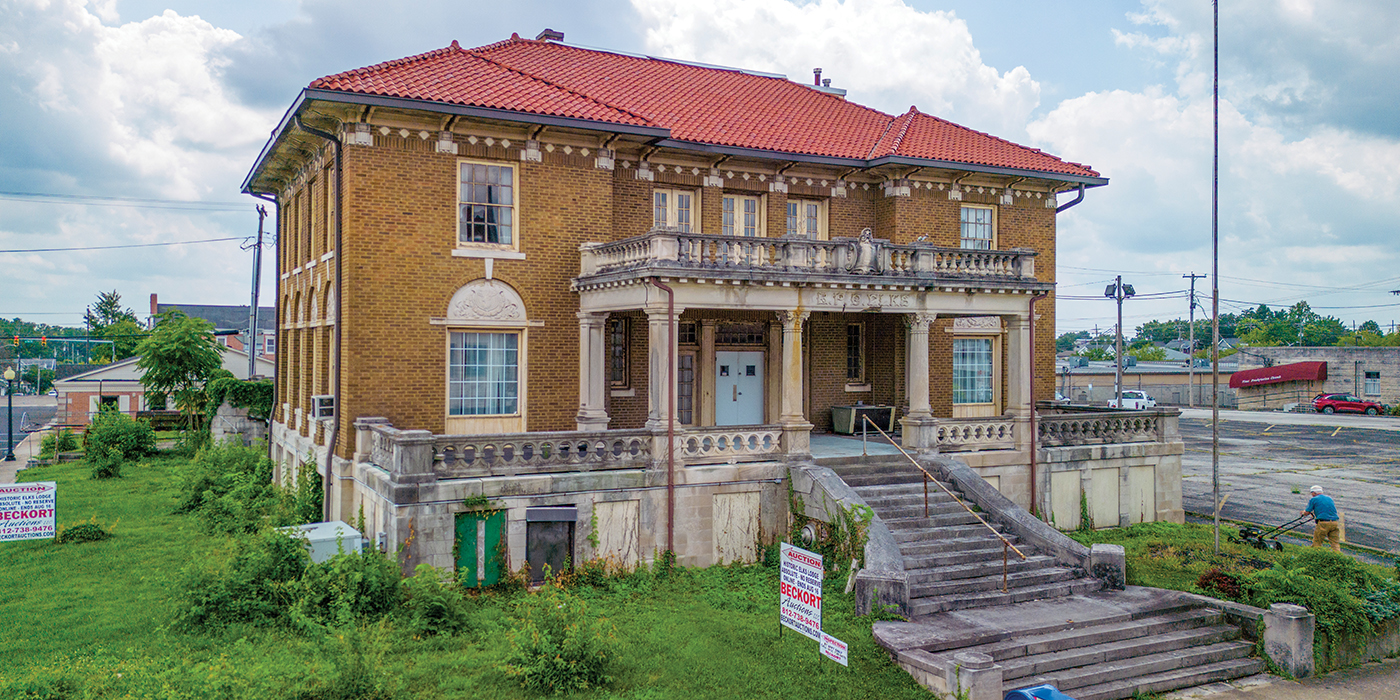
Looking Up
“Preservation takes time” is a common refrain among people who work to save old buildings. The sentiment is especially true of properties on Indiana Landmarks’ 10 Most Endangered list, which often face outsized financial and restoration challenges that require creative solutions, strategic partnerships, and significant investments of time and money. In 2023, we saw encouraging progress signaling a safer future for several 10 Most Endangered sites.
In Bedford’s Courthouse Square Historic District, the city’s 1917 Elks Lodge landed on our 10 Most Endangered list in 2015, when the local order’s few remaining members shuttered the landmark. The lodge’s prospects improved in fall 2023, when development partners 1930s Group and Allied Argenta purchased the building at auction—along with the nearby 1898 Krenke-Goff Building for sale by Indiana Landmarks—with plans to rehabilitate the structures as a joint mixed-use development. Indiana Landmarks and the City of Bedford will collaborate with the developers on the buildings’ preservation and community-based reuse.
“Our initial, immediate goal was to ensure the Elks Lodge would not be demolished and to transfer it into safe hands,” said Bedford native and historic preservation leader Adrian Scott Fine, partner in the 1930s Group, in a press release announcing the sale. “It is too important to the community and its history to be lost, and its revitalization is part of a larger effort to activate the historic square business district.”
Columbus’s Crump Theatre appeared on our 10 Most Endangered list in 2019, five years after fire and safety concerns closed the former opera house-turned-movie theater. By that time, a rotted roof left the building open to the elements, and sections of ceilings and walls had collapsed. Inside, mildew, bird droppings, graffiti, and broken items filled the building, which issued a stench detectable from the sidewalk. In 2020, a rallying cry to save the Art Deco landmark drew hundreds of volunteers to conduct a top-to-bottom cleanout.
Guided by a structural assessment by ARSEE Engineers, the grassroots group has since started tackling repairs with donated materials and labor, and $160,000 from the Columbus Capital Foundation, which owns the building. Workers have replaced the roof, added new marquee panels, repaired plaster, and conserved the lobby mural. The discovery of a massive honeybee hive that had to be relocated temporarily halted work near the stage, and workers found a surplus of coal under the auditorium floor. Creative thinking turned these lemons into lemonade; the group plans to eventually sell Crump Honey and Crump Coal as part of its merchandise. Since receiving an entertainment permit in August, the Crump has hosted concerts, movie screenings, and even a boxing tournament to raise money for future restoration.
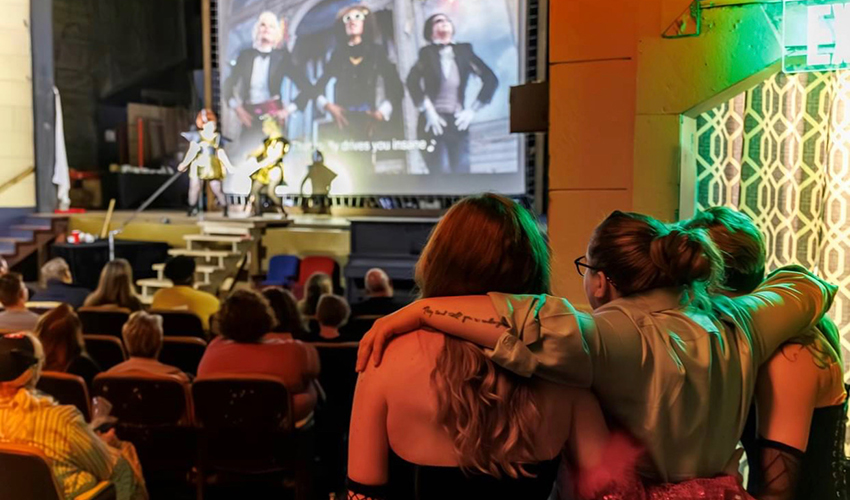
A grassroots volunteer group has been tackling repairs and organizing events in hopes of making the future more secure for Columbus’s Crump Theatre, which appeared on our 10 Most list in 2019. (Photo: Tony Vasquez Photography)
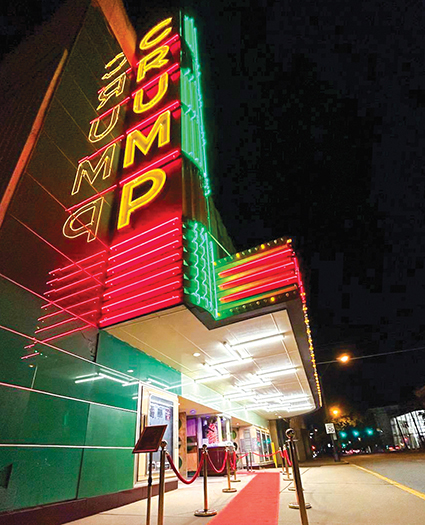
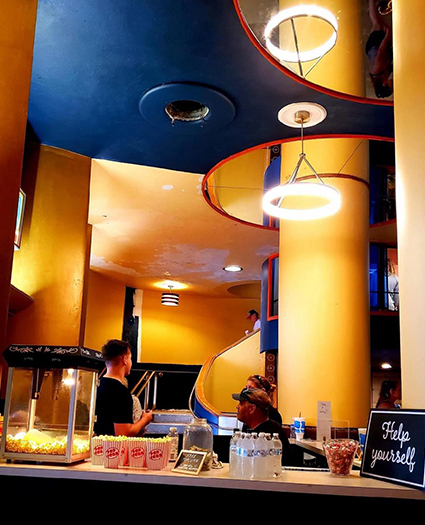
“The building is not done, but we wanted people to see the progress and potential,” says Jess Schnepp, who is serving as project manager over the theater’s rehabilitation for owner Columbus Capital Foundation. “Being able to hold events again has been extremely rewarding, watching people come in and see the looks on their faces. The response has been phenomenal.”
On a hillside overlooking the Ohio River in Lawrenceburg, the c.1860 Daniel S. Major House draws admiring looks, with bracketed eaves, hood moldings, and bay windows that inspired its nickname “Twin Bays.” Surrounded by sprawling commercial development and strip malls, the house’s location along US-50 made it a potential target for demolition, prompting the house’s inclusion on our 10 Most Endangered list in 2008. Waste management company Tri-State Liquid Waste purchased the property in 2020, attracted by its strategic location and acreage that could accommodate the business’s vehicles. The good condition of Twin Bays convinced company owners to convert the house into their offices, certainly a distinctive calling card.
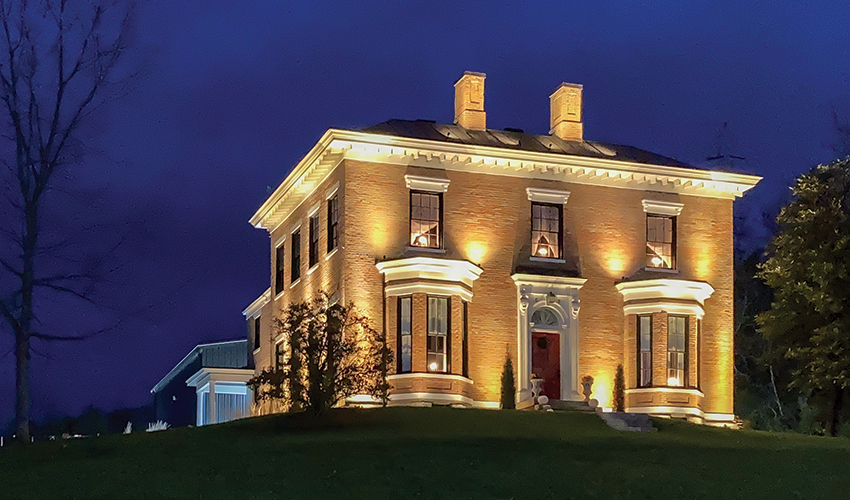
Concerns over nearby commercial development put Lawrenceburg’s “Twin Bays” (above) on our 10 Most Endangered list in 2008, but it stands on better footing today, repurposed as offices for a waste management company. (Photo: Mitchell Knigga)
In 2023, two ceremonies marked a turning point for long-imperiled landmarks in Gary and Delphi. Indiana Landmarks joined state, city, and community leaders in a ribbon cutting to celebrate the opening of the Monon High Bridge Trail, which includes breathtaking views from the formerly endangered 1891 Monon High Bridge stabilized and repaired by Indiana Landmarks. In Gary, city leaders, preservation group Decay Devils, and telecommunications firm Digital Equity LLC broke ground on a project to turn the city’s 1910 Union Station into a $8 million Fiber Smart House, job training center, and public space—a hopeful vision for a long-vacant landmark. Read more about plans for Union Station and the opening of the Monon High Bridge Trail.
This article first appeared in the January/February 2024 issue of Indiana Preservation, Indiana Landmarks’ member magazine.
Stay up to date on the latest news, stories, and events from Indiana Landmarks, around the state or in your area.

